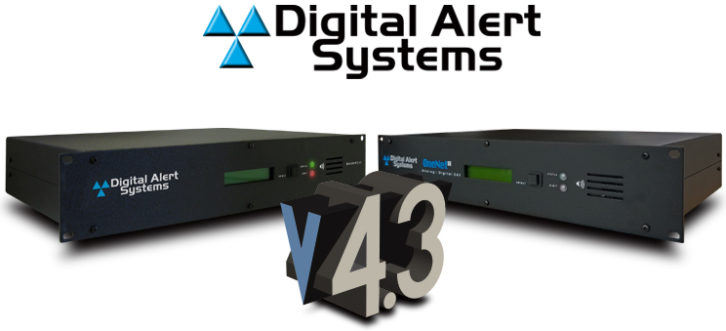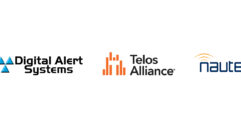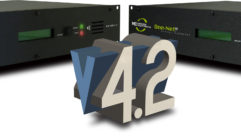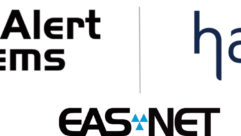
Industry-Leading Platform Now Enables Single Sign-On Bringing Powerful New Efficiencies to Enterprise CATV, IPTV, Radio, TV, and EOC Customers
LYNDONVILLE, N.Y. — March 25, 2021 — Digital Alert Systems, the global leader in emergency communications solutions for media providers, today announced the availability of Version 4.3 of its Emergency Alert System (EAS) software running on the company’s award-winning DASDEC™-II or One-Net™ SE EAS devices. Version 4.3 is a major release that further expands the security measures already built into the Version 4 software, including the addition of support for single sign-on (SSO) systems such as TACACS+.
SSO is an authentication scheme that allows a user to log in with a single ID and password to any of several related, yet independent, software systems. Version 4.3 is the first EAS system to offer SSO capabilities, which bring powerful new efficiencies to Digital Alert Systems’ enterprise customers. Whereas previously EAS system administrators were required to maintain different names and passwords for each device, now with SSO they can manage users’ access uniformly and grant or deny access to select individuals with the same tools they use for the rest of the enterprise.
Also, Version 4.3 includes key features for Digital Alert Systems’ DASEOC customers, improving connectivity and support for the new FEMA Integrated Public Alert and Warning System (IPAWS) Cloud Server changes. DASEOC is the company’s system for emergency operations centers, offering a cost-effective solution for the distribution of all-hazard alerts and warnings.
“The new SSO capabilities in Version 4.3 are the answer to a direct request from our enterprise DASDEC-II and One-Net SE customers, especially those who need to administer dozens — and sometimes hundreds — of EAS devices. The ability to control access across all of those users and devices offers a tremendous time savings and security advantage, in keeping with the overall security theme of Version 4,” said Bill Robertson, vice president of business development, Digital Alert Systems. “Not only does this feature place Digital Alert Systems even further ahead of all other manufacturers in the EAS space, but it showcases our company’s dedicated commitment to the continual product enhancements and improvements that clients seek. With Version 4.3 as the latest example, Digital Alert Systems offers the most powerful, flexible EAS/CAP messaging tools in the CATV, IPTV, radio, television, and EOC markets.”
Under the Digital Alert Systems Software Assurance Plan, any DASDEC-II or One-Net SE customer running Version 4.0, 4.1, or 4.2 can now download the Version 4.3 upgrade at no charge. Registered customers will receive an email with credentials; customers not yet upgraded to Version 4 may contact their Digital Alert Systems representative for more information.
More information about the Digital Alert Systems Version 4.3 software is available by email at support@digitalalertsystems.com or by calling +1 585-765-1155.
# # #
About Digital Alert Systems
Digital Alert Systems is the leading innovator of next-generation Common Alerting Protocol (CAP) and Emergency Alert Systems (EAS) for radio and television broadcasters. In 2009, Digital Alert Systems merged with Monroe Electronics, whose EAS products are the widely accepted standard for CATV. From its headquarters in Lyndonville, New York, Digital Alert Systems provides R&D, manufacturing, sales, and customer service for all Digital Alert Systems and Monroe Electronics One-Net™ brands and maintains its hard-earned reputation for quality, reliability, and service to valued customers around the world.
More information is available at www.digitalalertsystems.com.
All trademarks appearing herein are the property of their respective owners.
Link to Word Doc: www.wallstcom.com/DigitalAlertSystems/210325DigitalAlertSystems-EAS_V4.3.docx
Photo Link: www.wallstcom.com/DigitalAlertSystems/DigitalAlertSystems-EAS_V4.3.jpg
Image Caption: Now available, Version 4.3 of Digital Alert Systems’ software for DASDEC™-II or One-Net™ SE EAS devices.










